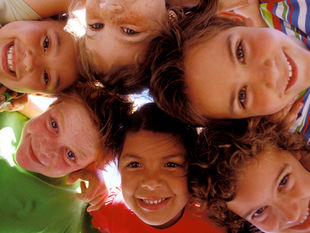
As parents, we all want to ensure our kids are growing up healthy and strong. But with so many food products, household items, and cooking materials being marketed as "safe" or "healthy," it can be difficult to know where to start when making changes for better well-being. Fortunately, small changes can make a big difference! Here are some easy swaps for healthier kids that can reduce toxins, improve nutrition, and promote a more eco-friendly lifestyle.
1. Cutting Out Artificial Food Dyes: Say Goodbye to Red 40
Food dyes, especially artificial ones like Red 40, are commonly found in many processed foods, snacks, and drinks marketed to kids. However, research has shown that food dyes can be linked to hyperactivity, behavior issues, and other health concerns. Red 40, in particular, has been under scrutiny for its potential to cause allergic reactions and contribute to ADHD symptoms.
Swap: Look for naturally colored foods or snacks that don’t contain artificial dyes. You can use natural food coloring derived from fruits and vegetables, like beet juice for red, turmeric for yellow, or spinach powder for green. Many brands are now offering dye-free options that are just as fun and colorful without the potential risks.
2. Switch to Glass Storage Instead of Plastic
Plastics, especially those containing BPA (Bisphenol A), are linked to a variety of health problems, from hormone disruption to developmental issues. Many plastic containers also break down over time, releasing harmful chemicals into food. The more plastic we use, the more we contribute to microplastics being released into the environment and into our bodies.
Swap: Replace plastic containers with glass storage jars or containers for your child’s food and snacks. Glass is a much safer option that doesn’t leach harmful chemicals, and it’s also better for the environment since it’s recyclable. Plus, glass containers can be used to store food for longer periods without compromising the quality of the food.
3. Stop Cooking with Teflon-Coated Pans
Many non-stick cookware sets use Teflon or other chemicals like PTFE (polytetrafluoroethylene) that can release harmful substances when heated. Studies have shown that chemicals used in non-stick pans may contribute to developmental problems, immune system disruption, and even cancer. These chemicals can also leach into food, posing a risk to your child’s health.
Swap: Invest in ceramic, cast iron, or stainless steel cookware. These materials are durable, safe, and free from the harmful chemicals found in non-stick pans. Ceramic-coated pans are an excellent non-toxic alternative to traditional non-stick cookware.
4. Switch to Organic, Whole Foods
In our busy world, it’s easy to grab processed foods and snacks, but many of these options are packed with sugars, preservatives, and pesticides that aren’t good for your child’s health. While switching to whole, organic foods can seem like a big commitment, it’s one of the most effective ways to ensure your kids are getting the nutrients they need without unnecessary additives.
Swap: Choose organic fruits and vegetables when possible. Organic foods are grown without the use of harmful pesticides and synthetic fertilizers. Additionally, try to opt for minimally processed foods—such as whole grains, lean proteins, and fresh fruits and veggies—that are richer in nutrients.
5. Switch to Natural Personal Care Products
Your child’s skin is sensitive, and many personal care products (like shampoos, lotions, and soaps) contain harsh chemicals like parabens, phthalates, and sulfates. These chemicals can disrupt hormones and lead to skin irritation, especially in younger children.
Swap: Use natural, organic personal care products free from parabens, sulfates, and artificial fragrances. Look for products that are specifically designed for kids and are made with gentle, plant-based ingredients. There are plenty of kid-friendly, eco-conscious brands that provide safer alternatives for bath time and skincare.
6. Eliminate Sugary Drinks
Sugary drinks like sodas, sugary juices, and flavored milks are full of empty calories, artificial sweeteners, and dyes that offer little nutritional value. High sugar intake can contribute to obesity, diabetes, and other health problems for kids.
Swap: Encourage your kids to drink water, herbal teas, or homemade smoothies instead of sugary drinks. You can add a slice of lemon, lime, or cucumber to water for a refreshing twist. Making homemade smoothies with fresh fruit, veggies, and a little yogurt or almond milk is also a great way to pack in nutrients without added sugars.
7. Switch to Eco-Friendly Toys and Products
Many children's toys are made from plastic and other materials that can be harmful to the environment and their health. Some toys contain chemicals like phthalates or BPA, which have been linked to various health problems, including hormone disruption and developmental issues.
Swap: Choose eco-friendly, non-toxic toys made from natural materials like wood, cotton, or bamboo. Many companies now offer BPA-free and phthalate-free toys that are safer for your child and the environment.
8. Minimize Exposure to Screen Time
While technology is a big part of modern life, excessive screen time can have negative effects on children’s health, such as eye strain, poor posture, and disrupted sleep patterns. Overuse of electronic devices can also impact cognitive and social development.
Swap: Encourage outdoor play and active physical activities like walking, biking, or playing sports to reduce screen time. Also, consider limiting screen time to a certain amount each day, particularly for younger children.
Simple Swaps for Big Health Benefits
Making small, conscious changes to your child's daily habits can add up to big health benefits in the long run. Whether it's cutting out artificial dyes, switching to safer cooking materials, or choosing eco-friendly toys, each change helps to create a healthier environment for your child to grow and thrive. Start by making one or two of these swaps today, and watch how it positively impacts your child’s health and well-being.
By opting for more natural, toxin-free choices in your home and your child’s diet, you're not just fostering their immediate well-being, but also setting them up for a healthier future.










